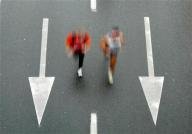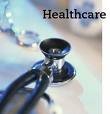
"Boomeritis" hits aging athletes
By Anne Harding
NEW YORK (Reuters Health) - Fifty may be the new thirty, but baby boomers' bodies haven't heard the news.
Orthopedic surgeons are seeing a "tidal wave" of 45- to 64-year-olds suffering from exercise-related injuries they've dubbed "boomeritis," Dr. Ray Monto, a spokesman for the American Academy of Orthopedic Surgeons (AAOS), told Reuters Health.
Exercise- and exercise equipment-related injuries sent more than 166,000 people in this age group to the emergency room, clinic or doctor's office in 2008, according to the US Consumer Products Safety Commission.
These injuries are largely due to people not giving themselves enough time to rest up after tough workouts, according to Monto, an orthopedic surgeon practicing in Nantucket and Martha's Vineyard, Massachusetts. "You can't beat yourself up the way you did when you were 20 because it takes longer to recover," he said.
Middle-aged people today are a lot more active than their parents were, he added, which is a good thing. "We're basically fitter and more athletic now longer into our lives than we ever were."
But, he added, older athletes need to take a few precautions to protect themselves from injuries like rotator cuff tears, tendonitis and stress fractures. Monto and AAOS offer the following tips:
Get a doctor's OK. Check with your physician before starting any type of exercise program. This is especially important if you've sustained athletic injuries in the past. Your doctor can make sure your heart is healthy, and offer advice on sports and activities that fit your fitness level.
Mix it up. Don't do the same workout day after day. "The problem is not running or biking, it's doing everything every day," Monto said. For example, instead of running 5 miles every day, an older athlete could try logging 8 miles every other day, and doing something completely different on the days in between.
Work on your flexibility. Monto said he's increasingly recommending that his older patients take up yoga. And it's crucial to stretch and warm up before a workout, and cool down and stretch again, the AAOS advises.
Feed your body. Eat well and take calcium and vitamin D supplements daily to keep your muscles and bones healthy.
Get some tips. Taking lessons in your sport of choice can help improve your form and reduce your injury risk.
Stay balanced. Make sure your exercise regimen includes a mix of cardiorespiratory workouts, strength training, and flexibility exercises.
Give it a rest. After a particularly tough workout, give yourself a couple of days to recover, and be sure to schedule days off into your exercise regimen.
SOURCE: American Academy of Orthopedic Surgeons, June 22, 2009.







 Rima Boustany
Rima Boustany
 Solange El-jbeily
Solange El-jbeily
